Lightning Photography
I remember reading an amazing article in National Geographic back in the early '90s about lightning. There were a handful of brilliant photographs, but the one that really grabbed me was a night shot overlooking a city as a storm front moved in, capturing 30 or more forks of lightning over a 30-second exposure. I'm no photographer (as I am happy to admit at every available opportunity), but when I saw an incredible storm front moving in on the evening of the 24th, I couldn't resist trying to create some of my own photographs of lightning.
I grabbed my camera and tripod and set up for a simple 5 second exposure under the cover of the patio. It became obvious pretty quick that this wasn't going to work. With the storm already on top of me, any forks (sparks?) that found their way out of the clouds were illuminating the whole area, leaving a washed-out, white mess.

I dropped to 3 seconds, but it was still too long. Though it was interesting to see how the lighting on the treeline changed depending on whether the lightning was happening behind me or in front of me.
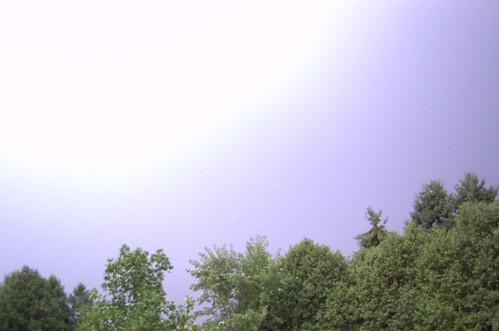
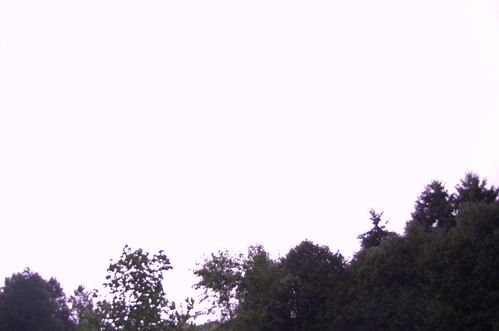
Eventually, I set the exposure time for 1 second and managed to catch my first clear spark.
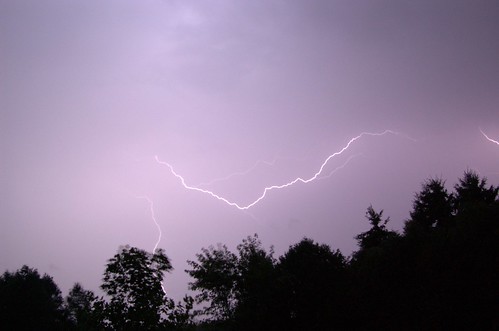
But with a 1 second exposure, it became much harder to capture lightning. I couldn't just pull the trigger and wait anymore. Well, I could, but the chances of actually capturing anything in that time was pretty low. And even when I did, things were still getting washed out.
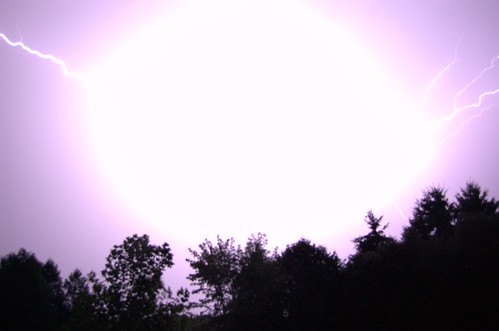
So I finally tried a half second exposure, and that seemed to get some decent results.
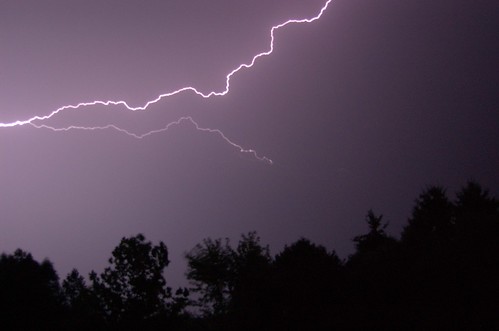
By this point I had taken about 260 pictures and filled up my SD card. With only 1 or 2 worth showing by this point, I had developed a much greater appreciation for the quality of the pictures on the Wikipedia page for lightning.
I dumped the card to my laptop and ran outside with an umbrella to see if I could get some pictures with fewer trees in the way. The lightning at this point was incredible. I could tell when a good one was coming because it would start from behind me, lighting up the trees. Then, from a hole in the clouds, tendrils of lightning burst through, like the tentacles of an octopus, and spread out in a circular pattern, crawling and dancing along the bottom surface of the clouds, spreading out like the spokes on a bicycle wheel.
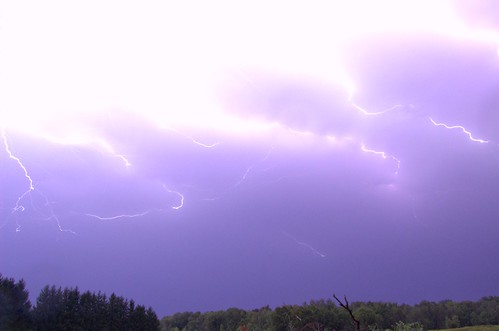
Thinking back to that National Geographic article and comparing it with my experiences during this storm, I've got some clues to improve my pictures for the next time. First, I need to get up to a higher spot of ground so that I can get clearer pictures of the sky with fewer obstructions. I'm not going to go stand on a bare hill with my metal tripod of anything, but something like an apartment balcony would be great.
Second, it seems that once the storm is on top of me, it's going to be a lot harder to get a good picture. I should set up so that I can get a clear shot of the front as it approaches. There are a couple of advantages to this - shots from further away won't light up the entire sky as much, making it easier to capture clear pictures of lightning. It'll also keep me ahead of the rain, and safer from the sky.
Finally, I really need to learn how to work my camera properly. At one point I managed to mess up the focus meaning there's a series of 3 to 4 shots that are pretty blurry. I was also shooting in shutter priority mode on the D40. I believe there is a way to get control over both the aperature and shutter speed at the same time, but I'm not sure how. I think a smaller aperature would have let me do much longer exposures without having the whole scene washed out. But then again, with the reflections due to the clouds, it may not have helped that much. More experimentation is needed.